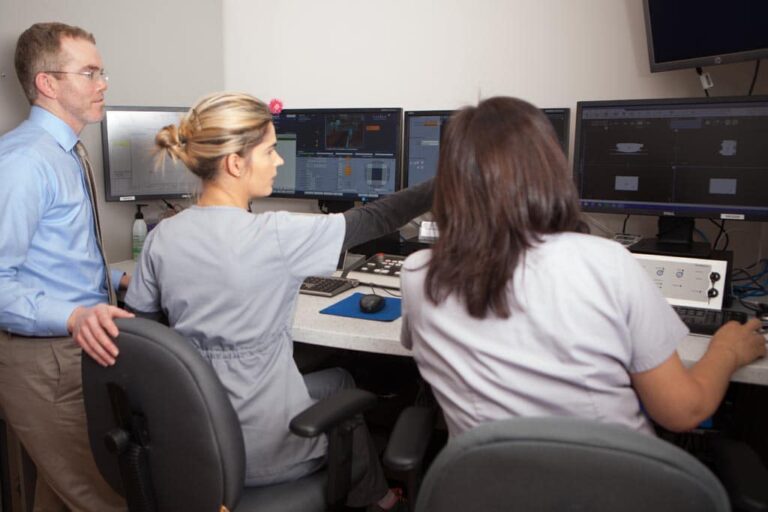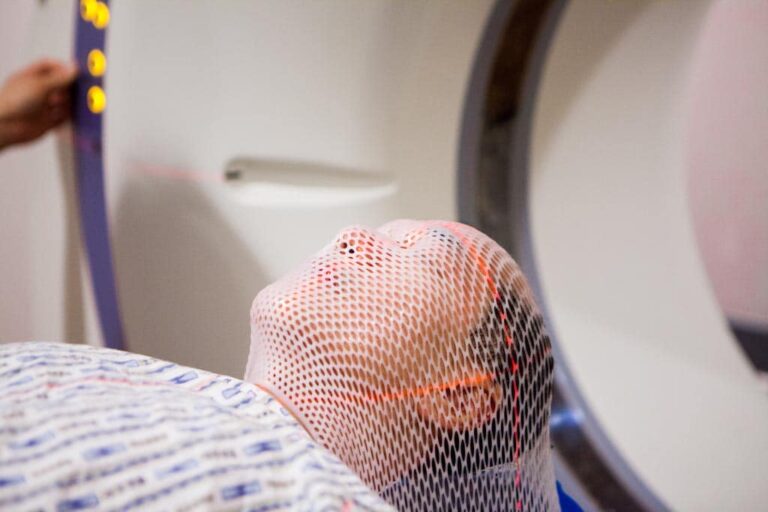Treatments and Technology
Our Technology
VARIAN TRUEBEAM® RADIOTHERAPY SYSTEM
The Florida Oncology Tavares Radiation Treatment Center is the only independent facility in the area to offer TrueBeam® technology. This is the latest advance in radiation therapy technology from Varian Medical Systems, the world’s leading producer of radiation therapy equipment. A clean-sheet design incorporating both the latest in digital technology and Varian’s decades of experience with previous generation linear accelerators, the TrueBeam® allows for radiation treatments to be faster, more accurate, and more comfortable than any previous radiation therapy platform.
Our TrueBeam® radiotherapy system is designed to treat cancer wherever it’s found in the body. This high-tech solution offers flexible treatment options, advanced imaging, high-precision dosage control, streamlined treatments, and an unrivaled level of safety and reliability for our patients.
Learn More about TrueBeam®.
Our treatments
Utilizing the latest radiotherapy technology allows the physicians at Florida Oncology Tavares to offer many advanced forms of radiation therapy. Our physicians will provide detailed information on which techniques are appropriate for individual patient cases.
- Accelerated Partial Breast Irradiation (APBI/SAVI®/MammoSite®/Contura)
- Electron Beam Radiation Therapy
- High Dose Rate (HDR) Brachytherapy for Breast, Lung, Gynecologic, and Skin Malignancies
- Image Guided Radiation Therapy (IGRT)
- Intensity Modulated Radiation Therapy (IMRT)
- RapidArc® (VMAT)
- Stereotactic Body Radiation Therapy/Stereotactic Ablative Body Radiation (SBRT/SABR)
- Stereotactic Radiosurgery (SRS)
- Three-dimensional Conformal Radiation Therapy (3D-CRT)



Accelerated Partial Breast Irradiation (APBI/SAVI®/MammoSite and Contura)
Electron Beam Radiation Therapy
Electron beam therapy is a radiation therapy typically used to treat shallow tumors. This treatment is often used on certain types of skin cancers. Electron beam therapy is different than other types of radiation that treat tumors deeper in the body using photons or protons.
High Dose Rate (HDR) Brachytherapy for Breast, Lung, Gynecologic, and Skin Malignancies
HDR brachytherapy utilizes a radiation source that is placed directly into or next to a tumor in order to deliver a high dose of localized radiation. This technique can be an effective treatment option for certain breast, lung, gynecologic, and skin cancers.
Image Guided Radiation Therapy (IGRT)
IGRT incorporates advanced imaging techniques during radiation treatment sessions, allowing the physician to view the targeted area and deliver precise doses of radiation. Utilizing the detailed images allows radiation oncologists to deliver higher doses of radiation to a narrowly focused treatment area, which may increase the probability of tumor control and shorter treatment schedules.
Intensity Modulated Radiation Therapy (IMRT)
IMRT uses carefully customized radiation beams, which are precisely shaped and calibrated to the shape of the cancer/tumor that is being targeted. In addition to accurate targeting, the intensity of each beam can be varied to efficiently treat the affected area while minimizing damage to surrounding tissue. It can be used to treat any area of the body and is often used to treat benign tumors.
RapidArc® (VMAT)
Stereotactic body radiation therapy/Stereotactic ablative body radiation (SBRT/SABR)
SABR (Stereotactic Ablative Body Radiation, also known as Stereotactic Body Radiation Therapy – SBRT) is a treatment technique that uses precisely targeted, very high dose x-ray beams to destroy small cancers. First developed in the early 2000s as an alternative to surgery for treatment of small lung cancers, it has since been proven to be highly effective and safe in the treatment of a wide variety of cancer types throughout the body, including prostate cancer.
Stereotactic Radiosurgery (SRS)
Stereotactic radiosurgery (SRS) uses many precisely focused radiation beams to treat tumors and other problems in wide range of areas within a patient’s body. SRS uses 3D imaging to target high doses of radiation to the affected area with minimal impact on the surrounding healthy tissue.
Three-Dimensional Conformal Radiation Therapy (3D-CRT)
3D-CRT is a procedure that begins by creating a computer-generated 3-D picture of a patient’s tumor. This imaging allows our doctors to give the highest possible dose of radiation to the tumor, while sparing the normal surrounding tissue as much as possible. Small beams of radiation are used to target the tumor with a high dose of radiation.

